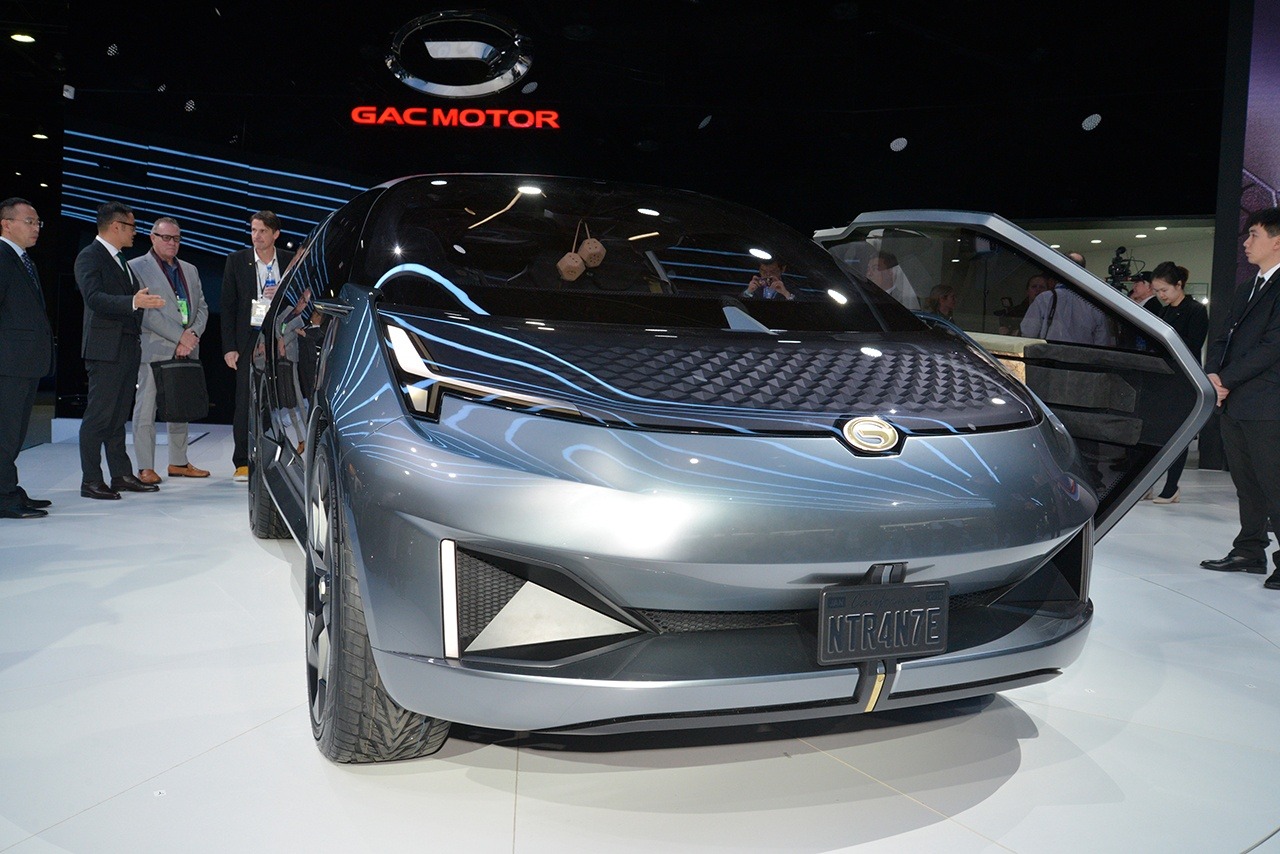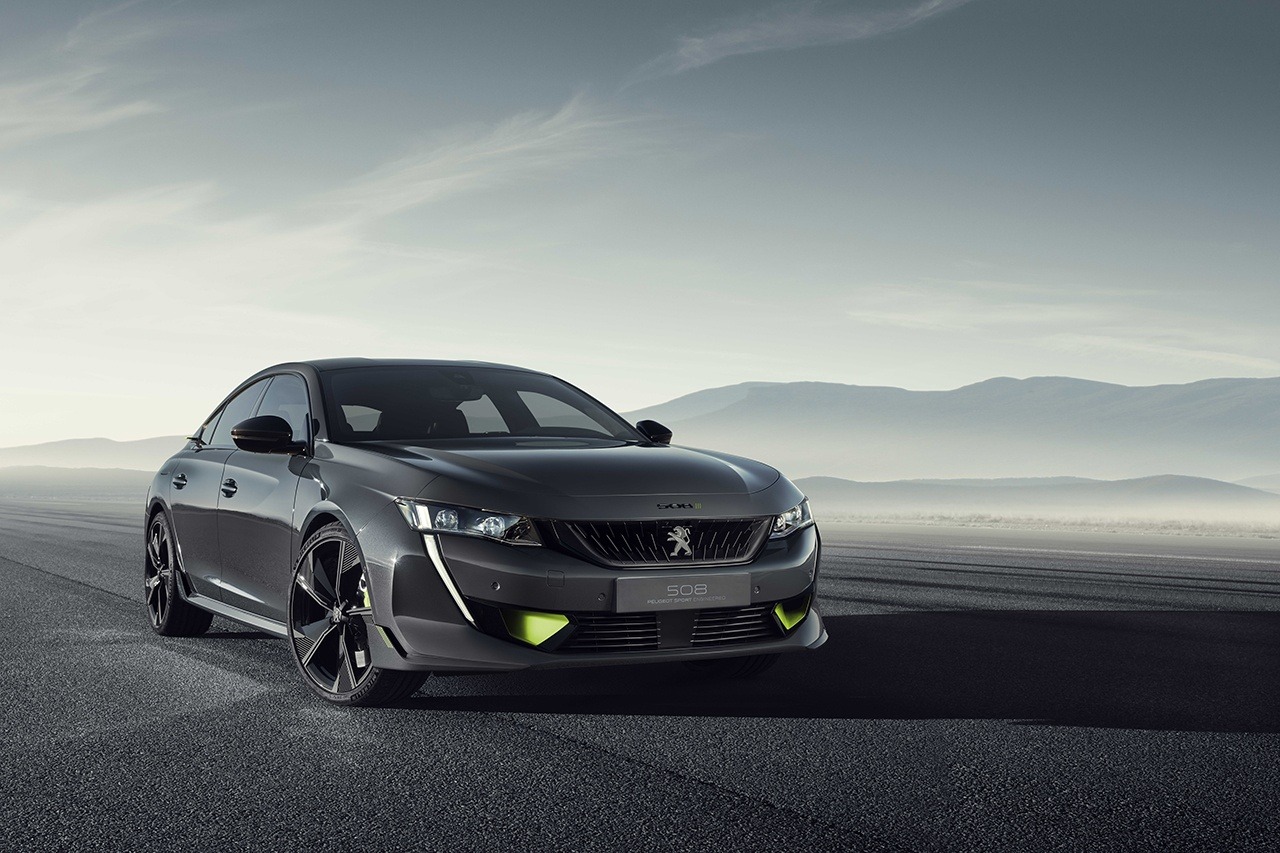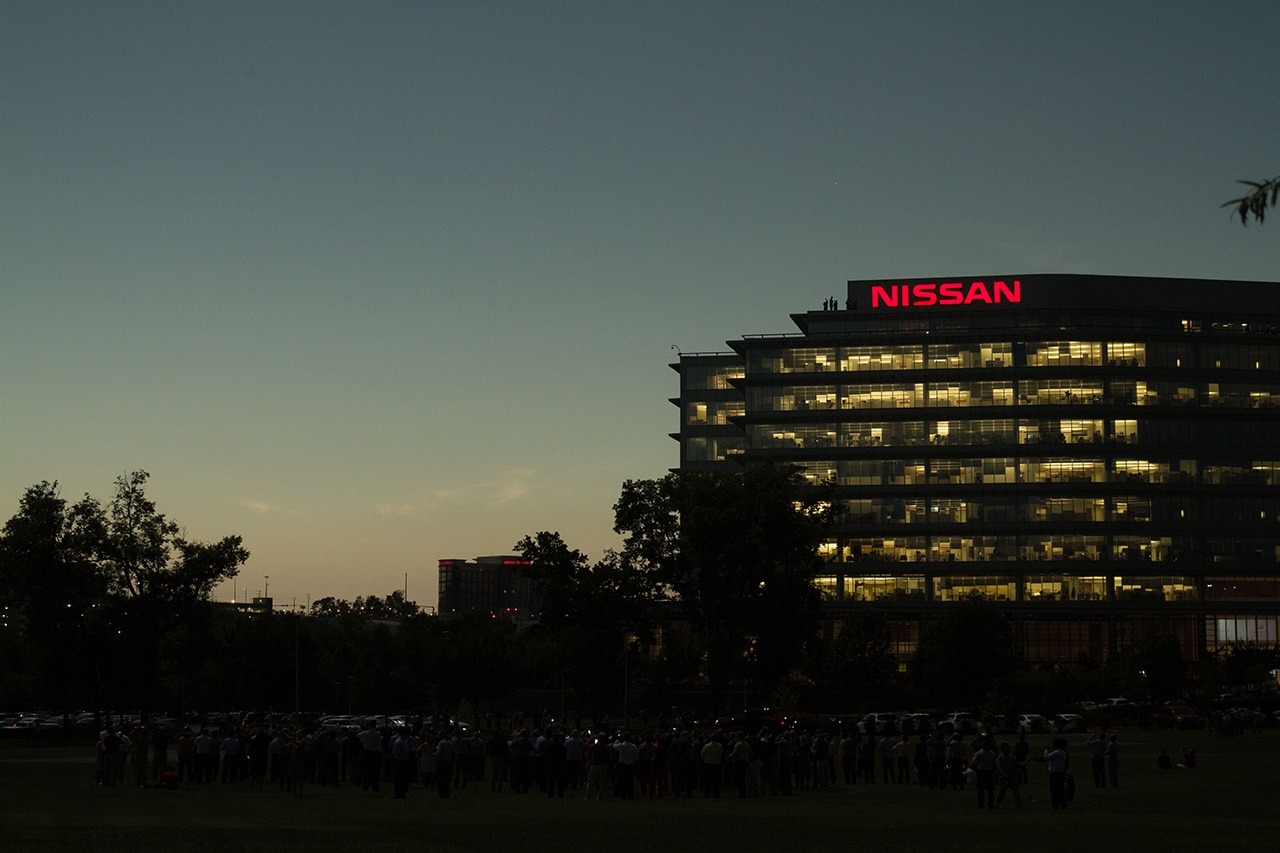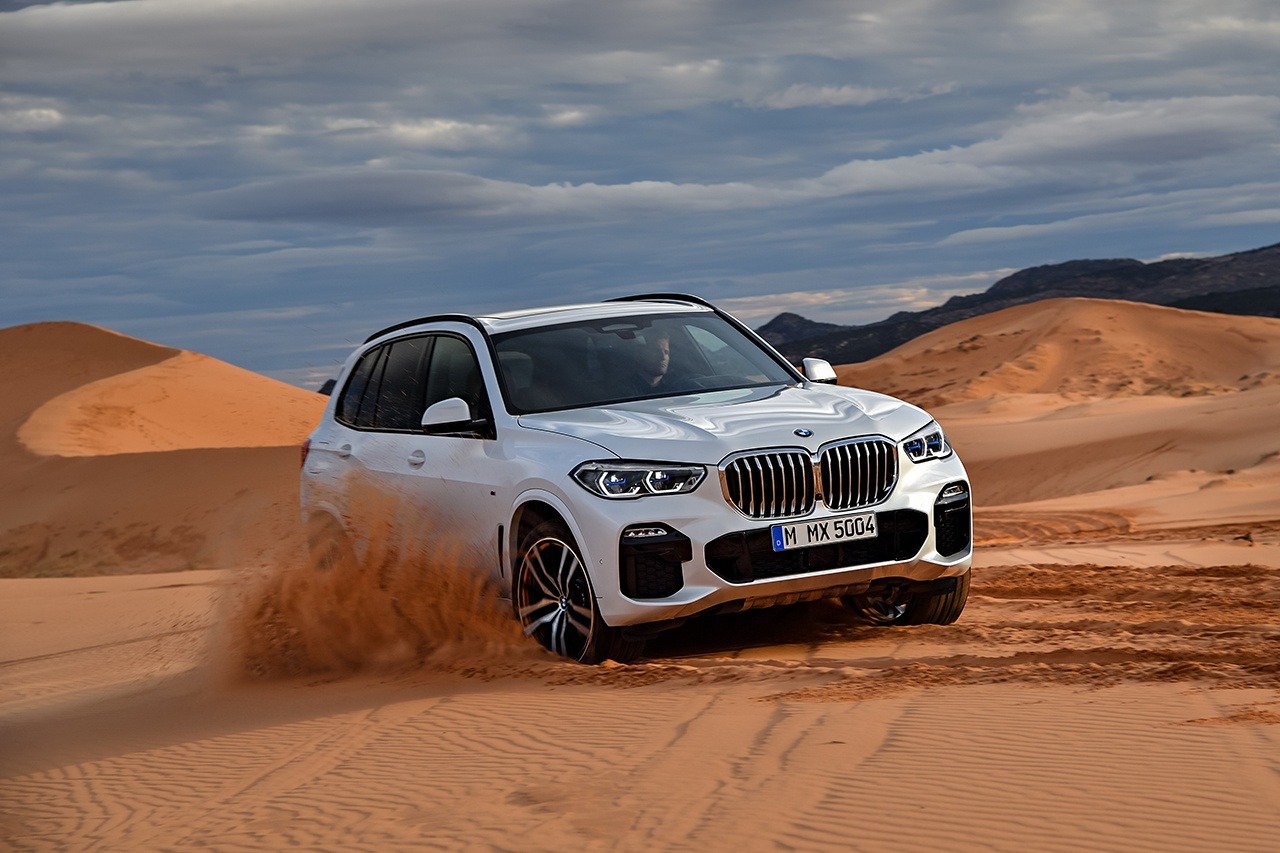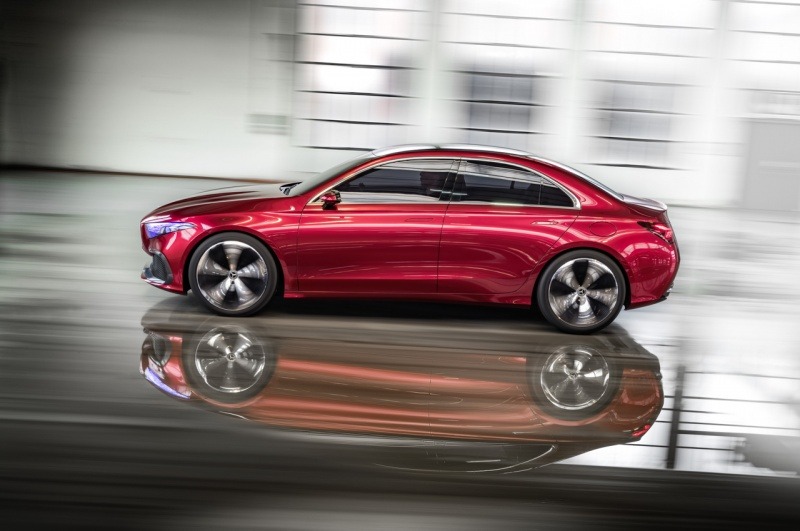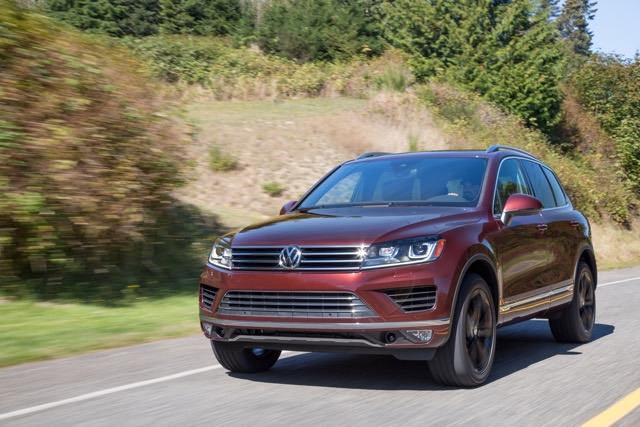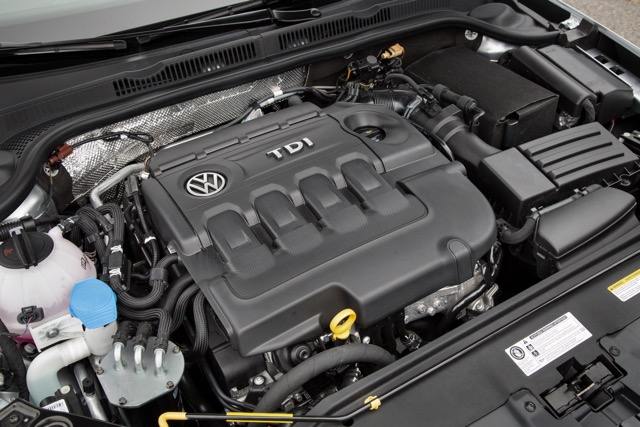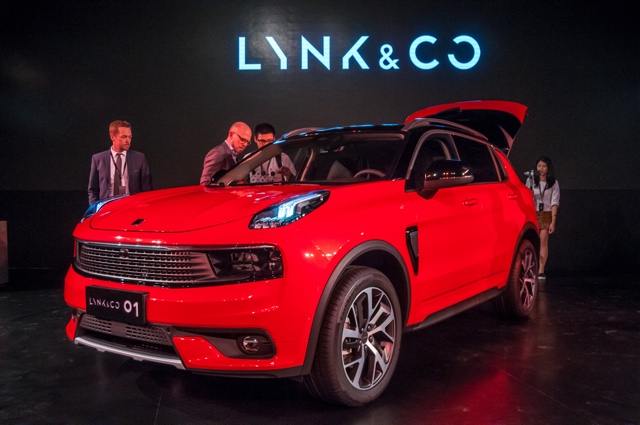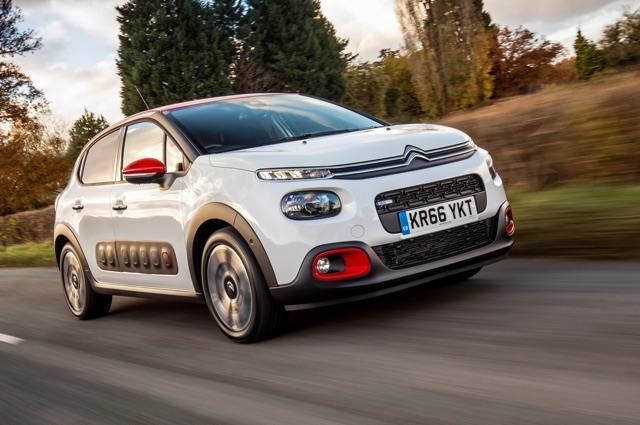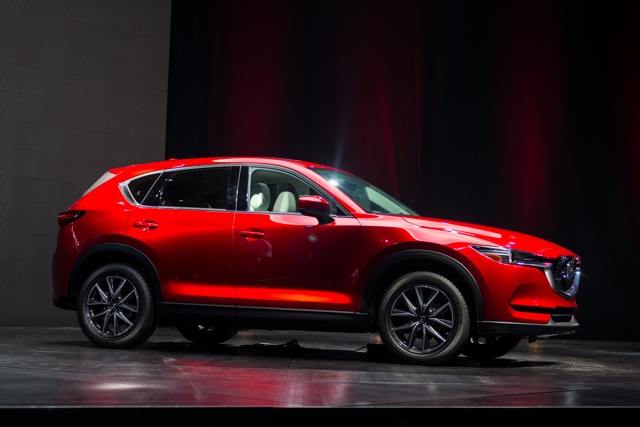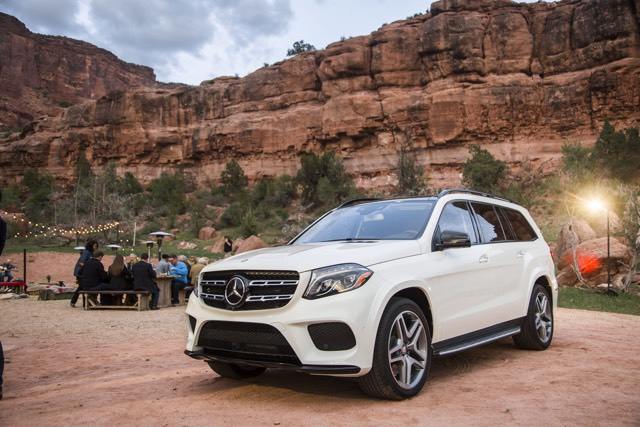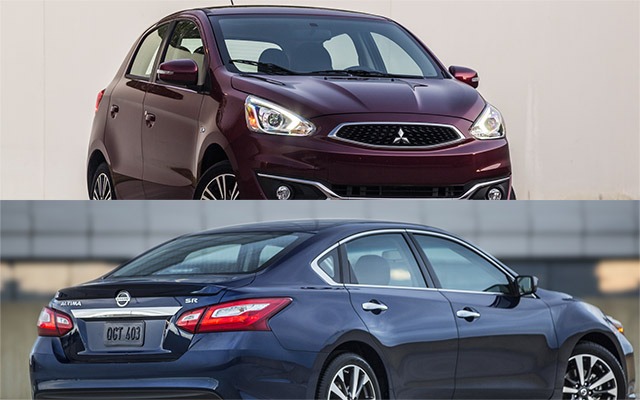Search the Community
Showing results for tags 'US'.
-
Guangzhou Automobile Group Co. (GAC) made a big splash at the Detroit Auto Show this year with a number of models destined for the U.S. The plan at the time was to begin talking with dealers at the National Automobile Dealers Association convention in March, with sales to follow early next year. But GAC has postponed plans of coming to the U.S. due to the trade war. In a statement issued to Bloomberg, GAC said “the escalation of China-U.S. trade frictions” and distribution “uncertainties” had made them decide to put their plans on hold. It's unclear how long this postponement will last, but it will likely be some months - maybe years. Many Chinese automakers have made pronouncements to sell vehicles in the U.S. for over a decade, with none coming to shore. As Automotive News notes, Chinese Automaker Zotye as recently as this month was still recruiting dealers and planning to begin sales in the U.S. late next year. Bloomberg reached out to other Chinese automakers, Great Wall: No immediate comment on whether or not it plans on adjusting its plans to coming to the U.S. Lynk & Co. (under the Geely umbrella): Spokesperson said they are "evaluating" plans for North America Source: Bloomberg, Automotive News (Subscription Required)
-
Guangzhou Automobile Group Co. (GAC) made a big splash at the Detroit Auto Show this year with a number of models destined for the U.S. The plan at the time was to begin talking with dealers at the National Automobile Dealers Association convention in March, with sales to follow early next year. But GAC has postponed plans of coming to the U.S. due to the trade war. In a statement issued to Bloomberg, GAC said “the escalation of China-U.S. trade frictions” and distribution “uncertainties” had made them decide to put their plans on hold. It's unclear how long this postponement will last, but it will likely be some months - maybe years. Many Chinese automakers have made pronouncements to sell vehicles in the U.S. for over a decade, with none coming to shore. As Automotive News notes, Chinese Automaker Zotye as recently as this month was still recruiting dealers and planning to begin sales in the U.S. late next year. Bloomberg reached out to other Chinese automakers, Great Wall: No immediate comment on whether or not it plans on adjusting its plans to coming to the U.S. Lynk & Co. (under the Geely umbrella): Spokesperson said they are "evaluating" plans for North America Source: Bloomberg, Automotive News (Subscription Required) View full article
-
The reaction Peugeot’s return to the U.S. Market a couple weeks back falls into three categories. OMG! We're getting exciting French cars again Why is another automaker coming to the U.S.? Split between 1 and 2 I should say that I fall into camp three at the moment. Previously, I was in number one when the rumors began to swirl around about PSA Group - parent company of Peugeot, Citroen, DS, Opel, and Vauxhall - making a possible return in late 2014. The dreams about possibly seeing a small number of Citroen and DS vehicles running around the U.S. sparked some joy. Peugeot was nowhere to be seen in my fantasy as they were seen to be somewhat bland in terms of their design. But once I had my dream play through my head, I began to wonder if this could work out for PSA Group. Despite being seen as the holy grail to many outside automakers, the U.S. is very notorious to break in and keep going forward. Consider these quotes from a 2016 report in Automotive News (Subscription Required). So when PSA made their official announcement in 2016, some of my worries began to drift away. PSA would also conduct extensive research into the U.S. marketplace to determine which brand would take the charge. The end goal was to possibly have a brand in the country by 2026. Possibly is the keyword as they made clear that could pass on this idea if various conditions weren't met. Since that announcement, PSA has been making some inroads into this plan, Establishing a North American office and bringing in Larry Dominique (formerly of Nissan and TrueCar) as the head Launching a ride-sharing and car sharing app in various U.S. cities Starting to develop vehicles for the U.S. The most recent announcement of Peugeot as the lead brand surely disappointed some folks as the likes of the C4 Cactus and DS5 would not arriving. But the decision does show the amount of thought and work that has been happening behind the scenes. Still, PSA Group and Peugeot still have a tough hill to climb. Reading through the comments on the article written by Drew, there are two common issues pointed out. One is how Peugeot doesn't have anything unique in their lineup. Two is how Peugeot could be entering a marketplace that is possibly on the verge of a recession. Let's begin with design. Out of all of the brands under the PSA umbrella, Peugeot plays it very much safe in terms of design. While the brand has been taking some risks in the past few years (especially with their interiors) they are no-where near the likes of Citroen. This difference is very apparent in the history of the two brands, Peugeot producing vehicles that were efficient and simple. But some of those design could jump in terms of elegance. Citroen pushing the envelope with their designs that are either praised or hated. DS falls under this umbrella as well. My hunch is that PSA figured that sending either Citroen or DS would be problematic because they might not appeal to consumers, and just sit on lots. The second reason does hold slightly more water. Signs are beginning to appear that the U.S. economy could be heading towards a recession - a key item being pointed at is the drop in new car sales. If Peugeot was to enter at the present time, the consequences could be severe and put them in a difficult spot. But as noted, Peugeot will not be arriving until 2026. That's over six years away and in that time, the economy could be recovering from the recession in question. Time is also the biggest enemy to Peugeot. In six years time, the U.S. marketplace could be in a completely different state than where it stands now. Crossovers and SUVs dominate the sales charts at the moment, but it might be electric vehicles that become the dominant choice. There are also various regulations that may come into fruition, along with the possibility of new tariffs on vehicles built in Europe. There’s also the issue of trying to stand out in the U.S. marketplace. Consider this for a moment; there are over forty automakers selling just under 300 or so nameplates. With the prospect of more automakers from China expected to arrive in the next few years, Peugeot might be entering a crowded field. Some of their current models have the looks, but can it combat strong competition that has a long history and reputation in the country? One item is very clear, PSA Group isn't stupid. They're taking their time and doing a lot of behind the scenes work before introducing their first models in the U.S. Whether or not this proves to the big success or the white flag being raised remains to be seen.
- 4 comments
-
- afterthoughts
- opinion
-
(and 2 more)
Tagged with:
-
The reaction Peugeot’s return to the U.S. Market a couple weeks back falls into three categories. OMG! We're getting exciting French cars again Why is another automaker coming to the U.S.? Split between 1 and 2 I should say that I fall into camp three at the moment. Previously, I was in number one when the rumors began to swirl around about PSA Group - parent company of Peugeot, Citroen, DS, Opel, and Vauxhall - making a possible return in late 2014. The dreams about possibly seeing a small number of Citroen and DS vehicles running around the U.S. sparked some joy. Peugeot was nowhere to be seen in my fantasy as they were seen to be somewhat bland in terms of their design. But once I had my dream play through my head, I began to wonder if this could work out for PSA Group. Despite being seen as the holy grail to many outside automakers, the U.S. is very notorious to break in and keep going forward. Consider these quotes from a 2016 report in Automotive News (Subscription Required). So when PSA made their official announcement in 2016, some of my worries began to drift away. PSA would also conduct extensive research into the U.S. marketplace to determine which brand would take the charge. The end goal was to possibly have a brand in the country by 2026. Possibly is the keyword as they made clear that could pass on this idea if various conditions weren't met. Since that announcement, PSA has been making some inroads into this plan, Establishing a North American office and bringing in Larry Dominique (formerly of Nissan and TrueCar) as the head Launching a ride-sharing and car sharing app in various U.S. cities Starting to develop vehicles for the U.S. The most recent announcement of Peugeot as the lead brand surely disappointed some folks as the likes of the C4 Cactus and DS5 would not arriving. But the decision does show the amount of thought and work that has been happening behind the scenes. Still, PSA Group and Peugeot still have a tough hill to climb. Reading through the comments on the article written by Drew, there are two common issues pointed out. One is how Peugeot doesn't have anything unique in their lineup. Two is how Peugeot could be entering a marketplace that is possibly on the verge of a recession. Let's begin with design. Out of all of the brands under the PSA umbrella, Peugeot plays it very much safe in terms of design. While the brand has been taking some risks in the past few years (especially with their interiors) they are no-where near the likes of Citroen. This difference is very apparent in the history of the two brands, Peugeot producing vehicles that were efficient and simple. But some of those design could jump in terms of elegance. Citroen pushing the envelope with their designs that are either praised or hated. DS falls under this umbrella as well. My hunch is that PSA figured that sending either Citroen or DS would be problematic because they might not appeal to consumers, and just sit on lots. The second reason does hold slightly more water. Signs are beginning to appear that the U.S. economy could be heading towards a recession - a key item being pointed at is the drop in new car sales. If Peugeot was to enter at the present time, the consequences could be severe and put them in a difficult spot. But as noted, Peugeot will not be arriving until 2026. That's over six years away and in that time, the economy could be recovering from the recession in question. Time is also the biggest enemy to Peugeot. In six years time, the U.S. marketplace could be in a completely different state than where it stands now. Crossovers and SUVs dominate the sales charts at the moment, but it might be electric vehicles that become the dominant choice. There are also various regulations that may come into fruition, along with the possibility of new tariffs on vehicles built in Europe. There’s also the issue of trying to stand out in the U.S. marketplace. Consider this for a moment; there are over forty automakers selling just under 300 or so nameplates. With the prospect of more automakers from China expected to arrive in the next few years, Peugeot might be entering a crowded field. Some of their current models have the looks, but can it combat strong competition that has a long history and reputation in the country? One item is very clear, PSA Group isn't stupid. They're taking their time and doing a lot of behind the scenes work before introducing their first models in the U.S. Whether or not this proves to the big success or the white flag being raised remains to be seen. View full article
- 4 replies
-
- 1
-

-
- afterthoughts
- opinion
-
(and 2 more)
Tagged with:
-
Since the arrest of former Nissan Chairman Carlos Ghosn last month, a fair amount of dirty laundry has come to light showing the turmoil and tension between various executives and the relationship between Nissan and its alliance partner, Renault. The arrest has also brought questions as to whether Ghosn 'jumped' or 'was pushed'. A new report from The Wall Street Journal is adding fuel to the latter. The paper obtained a transcript from a town hall meeting at Nissan's headquarters in Yokohama, Japan - days after Ghosn's arrest. Nissan CEO Hiroto Saikawa revealed that he disagreed with Ghosn's move to increase market share in the U.S., at the cost of investments for the Japanese market. “The investment in the Japanese market was very weak because there was too much power concentrated in one individual who decided that the Japanese market was less important, and we spent too much money on the U.S.,” said Saikawa. “He felt that there was no point investing in Japan where the population was stagnating.” Ghosn set a goal of achieving a 10 percent market share in the U.S. by 2017. Nissan came very close to hitting goal, reaching 9.2 percent last year. For Nissan to reach this goal, they piled on the incentives and made a push with sales to rental car companies - the latter according to industry analysts isn't as profitable, despite the higher volume. Nissan also put a lot of pressure on its dealers to move products. José Muñoz, who was Nissan's chairman in the U.S. from 2014 to this past January introduced a campaign under the slogan “Grow or Go.” Basically, if a dealer wasn't prepared to grow fast to meet the targets, Muñoz urged dealers to sell their franchise. “If a dealer didn’t perform they’d threaten a dealer with termination notice,” said Alan Haig, president of Haig Partners, a brokerage firm that deals with the sales of car dealers. The report doesn't say how much investment was moved from Japan to the U.S. But reading between the lines and noting the relationship between the two became quite tense, we're assuming it was a large amount. Source: Wall Street Journal (Subscription Required) View full article
- 5 replies
-
- investment
- japan
-
(and 3 more)
Tagged with:
-
Since the arrest of former Nissan Chairman Carlos Ghosn last month, a fair amount of dirty laundry has come to light showing the turmoil and tension between various executives and the relationship between Nissan and its alliance partner, Renault. The arrest has also brought questions as to whether Ghosn 'jumped' or 'was pushed'. A new report from The Wall Street Journal is adding fuel to the latter. The paper obtained a transcript from a town hall meeting at Nissan's headquarters in Yokohama, Japan - days after Ghosn's arrest. Nissan CEO Hiroto Saikawa revealed that he disagreed with Ghosn's move to increase market share in the U.S., at the cost of investments for the Japanese market. “The investment in the Japanese market was very weak because there was too much power concentrated in one individual who decided that the Japanese market was less important, and we spent too much money on the U.S.,” said Saikawa. “He felt that there was no point investing in Japan where the population was stagnating.” Ghosn set a goal of achieving a 10 percent market share in the U.S. by 2017. Nissan came very close to hitting goal, reaching 9.2 percent last year. For Nissan to reach this goal, they piled on the incentives and made a push with sales to rental car companies - the latter according to industry analysts isn't as profitable, despite the higher volume. Nissan also put a lot of pressure on its dealers to move products. José Muñoz, who was Nissan's chairman in the U.S. from 2014 to this past January introduced a campaign under the slogan “Grow or Go.” Basically, if a dealer wasn't prepared to grow fast to meet the targets, Muñoz urged dealers to sell their franchise. “If a dealer didn’t perform they’d threaten a dealer with termination notice,” said Alan Haig, president of Haig Partners, a brokerage firm that deals with the sales of car dealers. The report doesn't say how much investment was moved from Japan to the U.S. But reading between the lines and noting the relationship between the two became quite tense, we're assuming it was a large amount. Source: Wall Street Journal (Subscription Required)
- 5 comments
-
- investment
- japan
-
(and 3 more)
Tagged with:
-
The effects of the on-going trade spat between the U.S. and China are beginning to be felt. According to Reuters, BMW is increasing the pricing on the U.S.-built X5 and X6 crossovers for the Chinese market. In a statement, BMW said the price increases will range from four to seven percent. This will only make a small dent in the 40 percent tariff being slapped on U.S. made vehicles entering China. BMW will be absorbing the remainder of the tariff for the time being. “BMW stands for free (trade) but can’t stand still without taking actions to respond to the market changes,” said a BMW spokeswoman. The German automaker isn't the only one to raise prices on vehicles destined to China. Reuters has learned from dealers that Mercedes-Bena has raised the price of the GLE-Class, which is built in Alabama. Source: Reuters View full article
-
The effects of the on-going trade spat between the U.S. and China are beginning to be felt. According to Reuters, BMW is increasing the pricing on the U.S.-built X5 and X6 crossovers for the Chinese market. In a statement, BMW said the price increases will range from four to seven percent. This will only make a small dent in the 40 percent tariff being slapped on U.S. made vehicles entering China. BMW will be absorbing the remainder of the tariff for the time being. “BMW stands for free (trade) but can’t stand still without taking actions to respond to the market changes,” said a BMW spokeswoman. The German automaker isn't the only one to raise prices on vehicles destined to China. Reuters has learned from dealers that Mercedes-Bena has raised the price of the GLE-Class, which is built in Alabama. Source: Reuters
-
Mercedes-Benz has never sold the A-Class in the U.S. as it wasn't sure consumers would buy a luxury hatchback. But Mercedes will be finally bringing over the next-generation A-Class, but as a sedan. "We truly believe that now with the body style we have the right answer for the market," said Britta Seeger, Mercedes-Benz's global sales chief to Automotive News. When the model launches next fall in U.S., the A-Class sedan will become the brand's entry-level model. Mercedes is aiming the model at younger buyers that are new to the brand. "It's a very attractive car for younger people. But not only for younger people — it can have a broad audience because it's a nice entrance into the Mercedes-Benz family," said Seeger. Currently, the cheapest way to get into a Mercedes-Benz is the CLA-Class with a pricetag of $32,700. It is expected that the A-Class sedan will start under $30,000. When asked about this, Seeger said, "We will see." Click here for more Mercedes-Benz News Source: Automotive News (Subscription Required) View full article
- 67 replies
-
- a-class
- mercedes-benz
-
(and 2 more)
Tagged with:
-
Mercedes-Benz has never sold the A-Class in the U.S. as it wasn't sure consumers would buy a luxury hatchback. But Mercedes will be finally bringing over the next-generation A-Class, but as a sedan. "We truly believe that now with the body style we have the right answer for the market," said Britta Seeger, Mercedes-Benz's global sales chief to Automotive News. When the model launches next fall in U.S., the A-Class sedan will become the brand's entry-level model. Mercedes is aiming the model at younger buyers that are new to the brand. "It's a very attractive car for younger people. But not only for younger people — it can have a broad audience because it's a nice entrance into the Mercedes-Benz family," said Seeger. Currently, the cheapest way to get into a Mercedes-Benz is the CLA-Class with a pricetag of $32,700. It is expected that the A-Class sedan will start under $30,000. When asked about this, Seeger said, "We will see." Click here for more Mercedes-Benz News Source: Automotive News (Subscription Required)
- 67 comments
-
- a-class
- mercedes-benz
-
(and 2 more)
Tagged with:
-

Volkswagen Touareg Disappears from U.S. Lineup Next Year
William Maley posted an article in Volkswagen
2017 will be the last year Volkswagen sells the Touareg in the U.S., according to Motor Trend. While a reason as to why wasn't given, we have to think declining sales played a key role. The past few years have seen sales fall at a steady rate - 2016 saw a 40 percent drop to 4,223 units. 2017 isn't faring any better with 1,630 Touaregs sold through June. There is also the model being squeezed by the larger Atlas crossover and the upcoming Tiguan, which is slightly longer than the Touareg. Volkswagen will continue to sell the Touareg in other markets, with the next-generation model due out later this year. Source: Motor Trend -
2017 will be the last year Volkswagen sells the Touareg in the U.S., according to Motor Trend. While a reason as to why wasn't given, we have to think declining sales played a key role. The past few years have seen sales fall at a steady rate - 2016 saw a 40 percent drop to 4,223 units. 2017 isn't faring any better with 1,630 Touaregs sold through June. There is also the model being squeezed by the larger Atlas crossover and the upcoming Tiguan, which is slightly longer than the Touareg. Volkswagen will continue to sell the Touareg in other markets, with the next-generation model due out later this year. Source: Motor Trend View full article
-
One question that we have found ourselves wondering is who blew the whistle on the software cheat Volkswagen was using on their TDI models. A new book says it was someone at Volkswagen of America. Automotive News got their hands on Faster, Higher, Farther: The Volkswagen Scandal by New York Times reporter Jack Ewing. In the book, Ewing reveals that the head of VW’s Engineering and Environmental Office in the U.S., Stuart Johnson revealed the existence of the cheat to federal authorities. Johnson was the primary contact for the various regulation agencies in the U.S. and would be one of the people on the front lines when the scandal unfolded. In the book, CARB deputy executive director Alberto Ayala named Johnson as the person who revealed the existence of Volkswagen's illegal software. This revelation took place prior to a key meeting between CARB and Volkswagen on August 19, 2015. By revealing this information, Johnson was violating orders given by VW's higher ups. This meeting is mentioned in the federal indictment of Oliver Schmidt, a former VW executive who is facing 11 federal charges dealing with the scandal. Johnson is mentioned in the indictment as “Cooperating Witness 1.” The indictment also states the witness “has agreed to cooperate with the government’s investigation in exchange for an agreement that the government will not prosecute CW1 in the United States.” Source: Automotive News (Subscription Required) View full article
- 5 replies
-
- as the diesel emits
- diesel emission scandal
-
(and 3 more)
Tagged with:
-

As the Diesel Emits: Who Blew the Whistle on Volkswagen's Cheating?
William Maley posted an article in Volkswagen
One question that we have found ourselves wondering is who blew the whistle on the software cheat Volkswagen was using on their TDI models. A new book says it was someone at Volkswagen of America. Automotive News got their hands on Faster, Higher, Farther: The Volkswagen Scandal by New York Times reporter Jack Ewing. In the book, Ewing reveals that the head of VW’s Engineering and Environmental Office in the U.S., Stuart Johnson revealed the existence of the cheat to federal authorities. Johnson was the primary contact for the various regulation agencies in the U.S. and would be one of the people on the front lines when the scandal unfolded. In the book, CARB deputy executive director Alberto Ayala named Johnson as the person who revealed the existence of Volkswagen's illegal software. This revelation took place prior to a key meeting between CARB and Volkswagen on August 19, 2015. By revealing this information, Johnson was violating orders given by VW's higher ups. This meeting is mentioned in the federal indictment of Oliver Schmidt, a former VW executive who is facing 11 federal charges dealing with the scandal. Johnson is mentioned in the indictment as “Cooperating Witness 1.” The indictment also states the witness “has agreed to cooperate with the government’s investigation in exchange for an agreement that the government will not prosecute CW1 in the United States.” Source: Automotive News (Subscription Required)- 5 comments
-
- as the diesel emits
- diesel emission scandal
-
(and 3 more)
Tagged with:
-
Last October, Chinese automaker Geely unveiled a new global brand called Lynk & Co. This brand stood out in a few ways, Vehicles will be sold online Owners will be able to share their Lynk & Co vehicles to make some money An open application programming interface to develop in-car applications Recently announcing all of their vehicles would come with lifetime warranties The plan was for the brand to launch in China this year, with Europe and U.S. following in late 2018. But a new report from Automotive News says the launch for Europe and U.S. has been pushed back to 2019. “We think we will start in Europe between the first quarter and the first half of 2019 and enter the U.S. some months later,” said Alain Visser, Lynk & Co's senior vice president of marketing and sales. The reason for pushback comes down to Lynk & Co needing more time to establish a company-owned dealership network as it is taking slightly longer to find the locations. Visser said the company wants to build up a network of 500 dealers comprising of flagship and temporary pop-up stores. Despite having stores, vehicles will be sold online and delivered to the owner's house or office. Visser said plans for the Chinese launch is still on schedule with the 01 crossover launching towards the end of the year. Source: Automotive News (Subscription Required) Pic Credit: Newspress View full article
-

Lynk & Co Pushes Back Launch For Europe and U.S.
William Maley posted an article in Automotive Industry
Last October, Chinese automaker Geely unveiled a new global brand called Lynk & Co. This brand stood out in a few ways, Vehicles will be sold online Owners will be able to share their Lynk & Co vehicles to make some money An open application programming interface to develop in-car applications Recently announcing all of their vehicles would come with lifetime warranties The plan was for the brand to launch in China this year, with Europe and U.S. following in late 2018. But a new report from Automotive News says the launch for Europe and U.S. has been pushed back to 2019. “We think we will start in Europe between the first quarter and the first half of 2019 and enter the U.S. some months later,” said Alain Visser, Lynk & Co's senior vice president of marketing and sales. The reason for pushback comes down to Lynk & Co needing more time to establish a company-owned dealership network as it is taking slightly longer to find the locations. Visser said the company wants to build up a network of 500 dealers comprising of flagship and temporary pop-up stores. Despite having stores, vehicles will be sold online and delivered to the owner's house or office. Visser said plans for the Chinese launch is still on schedule with the 01 crossover launching towards the end of the year. Source: Automotive News (Subscription Required) Pic Credit: Newspress -

PSA Group Makes Their Next Step For North America, Names VP
William Maley posted an article in Automotive Industry
PSA Group is slowing making end roads into U.S. as part of their 10-year plan. We have already reported on their carsharing service, TravelCar that will be launching in select markets this month. Now, the French automaker has taken the next step by announcing former Nissan and TrueCar executive Larry Dominique as a Senior Vice President of PSA North America. Automotive News reports Dominique's role will first deal with the car-sharing aspects before starting to make progress on one or all of the brands in the U.S. “This is a market that, as a full-line automaker, you need to be part of. But this is a 10-year project. It’s not about jumping in and creating market share as quickly as possible.” said Dominique. “Positioning a brand in the U.S. marketplace -- which is very crowded today -- is going to take patience, analysis and data. And it’s going to take careful execution. That’s why we’re not rushing into this. There are a lot of unanswered questions facing Dominique such as which brands will be sold in the U.S. and how will the vehicles be sold - dealer network or some other way. “It’s going to be a significant amount of money to re-enter the market. But we haven’t set a number. If we can find more efficient ways to market and sell our vehicles -- whether it’s in a traditional partnership with investors or not -- those are things that can heavily influence the cost of coming to market,” said Dominique. Source: Automotive News (Subscription Required) -
PSA Group is slowing making end roads into U.S. as part of their 10-year plan. We have already reported on their carsharing service, TravelCar that will be launching in select markets this month. Now, the French automaker has taken the next step by announcing former Nissan and TrueCar executive Larry Dominique as a Senior Vice President of PSA North America. Automotive News reports Dominique's role will first deal with the car-sharing aspects before starting to make progress on one or all of the brands in the U.S. “This is a market that, as a full-line automaker, you need to be part of. But this is a 10-year project. It’s not about jumping in and creating market share as quickly as possible.” said Dominique. “Positioning a brand in the U.S. marketplace -- which is very crowded today -- is going to take patience, analysis and data. And it’s going to take careful execution. That’s why we’re not rushing into this. There are a lot of unanswered questions facing Dominique such as which brands will be sold in the U.S. and how will the vehicles be sold - dealer network or some other way. “It’s going to be a significant amount of money to re-enter the market. But we haven’t set a number. If we can find more efficient ways to market and sell our vehicles -- whether it’s in a traditional partnership with investors or not -- those are things that can heavily influence the cost of coming to market,” said Dominique. Source: Automotive News (Subscription Required) View full article
-
Mazda is in the process of trying to position themselves as a premium brand that you can actually afford. Autoblog had the chance to speak with Jacques Flynn, a lead exterior designer, and Jacob Brown, a PR representative for Mazda. A key part of Mazda's premium plans is their Kodo design language. Flynn explained that Mazda will be simplifying and evolving the look of Kodo on their various models. A key example is the recently introduced second-generation CX-5. Compared to the outgoing model, the new CX-5 features fewer curves to make it look tauter. Diesel will also play a key part in Mazda's premium ambitions. Brown explained that diesel has the air of premium surrounding it as luxury automakers, for the most part, offer them in the U.S. Mazda was hoping not to use urea-injection for their diesel models, but ultimately had to give in to meet emission standards and performance benchmarks. Those hoping that Mazda would bring back Mazdaspeed on some performance models will be disappointed to hear it could be a while before this happens. Both Flynn and Brown said the company's focus is "on making the core line-up cohesive." Being a small company, they cannot take any chances on working a number of projects at the same time since that could result in a misstep or two. Source: Autoblog
-
Mazda is in the process of trying to position themselves as a premium brand that you can actually afford. Autoblog had the chance to speak with Jacques Flynn, a lead exterior designer, and Jacob Brown, a PR representative for Mazda. A key part of Mazda's premium plans is their Kodo design language. Flynn explained that Mazda will be simplifying and evolving the look of Kodo on their various models. A key example is the recently introduced second-generation CX-5. Compared to the outgoing model, the new CX-5 features fewer curves to make it look tauter. Diesel will also play a key part in Mazda's premium ambitions. Brown explained that diesel has the air of premium surrounding it as luxury automakers, for the most part, offer them in the U.S. Mazda was hoping not to use urea-injection for their diesel models, but ultimately had to give in to meet emission standards and performance benchmarks. Those hoping that Mazda would bring back Mazdaspeed on some performance models will be disappointed to hear it could be a while before this happens. Both Flynn and Brown said the company's focus is "on making the core line-up cohesive." Being a small company, they cannot take any chances on working a number of projects at the same time since that could result in a misstep or two. Source: Autoblog View full article
-

Mercedes Wonders If Its Worth Selling Diesels In the U.S.
William Maley posted an article in Mercedes Benz
Thanks to the Volkswagen diesel emission scandal and demand for diesel vehicles beginning to shrink, Mercedes-Benz is wondering if it's time to pull back on their diesel efforts in the U.S. "We have to look at that and see whether it makes sense to offer diesels in the future. We have not come to a conclusion but we obviously always tend to develop cars and offer vehicles according to customers' demands," said Matthias Luehrs, vice president of sales and product management for Mercedes-Benz. Dropping diesels for the U.S. "is a theoretical option," he went onto say. Mercedes have already dropped plans for bringing the C-Class diesel, a model that was supposed to go on sale earlier this year. Right now, the priority at Mercedes-Benz is getting EPA certification for the GLS-Class. Other models are expected down the road. Luehrs said the company is currently doing market research and expects the first results to come in early next year. Source: Automotive News (Subscription Required)- 9 comments
-
- diesel
- mercedes-benz
-
(and 2 more)
Tagged with:
-
Thanks to the Volkswagen diesel emission scandal and demand for diesel vehicles beginning to shrink, Mercedes-Benz is wondering if it's time to pull back on their diesel efforts in the U.S. "We have to look at that and see whether it makes sense to offer diesels in the future. We have not come to a conclusion but we obviously always tend to develop cars and offer vehicles according to customers' demands," said Matthias Luehrs, vice president of sales and product management for Mercedes-Benz. Dropping diesels for the U.S. "is a theoretical option," he went onto say. Mercedes have already dropped plans for bringing the C-Class diesel, a model that was supposed to go on sale earlier this year. Right now, the priority at Mercedes-Benz is getting EPA certification for the GLS-Class. Other models are expected down the road. Luehrs said the company is currently doing market research and expects the first results to come in early next year. Source: Automotive News (Subscription Required) View full article
- 9 replies
-
- diesel
- mercedes-benz
-
(and 2 more)
Tagged with:
-
The past month at Mitsubishi Motors has been tumultuous with the announcement that they had manipulated fuel economy numbers on a number of small city cars sold by them and Nissan. It would come to light that this manipulation had been going since 1991 on a number of models sold in Japan. Shares in the company dropped like a rock and there were concerns that Mitsubishi Motors would have to borrow money from other companies in the Mitsubishi conglomerate. But soon a white knight would appear, Nissan. The company that first discovered and reported it to Mitsubishi would buy a 34 percent share into the automaker, making it the largest shareholder. Thus, an alliance between the two was created. The two automakers are currently still in the beginning stages of their alliance, but certain things have been made clear of what the two hope to accomplish. The biggest one is to improve the reputation of Mitsubishi Motors in Japan. There is also talk about two working together on electric vehicles and possibly sharing a platform for their next-generation pickups. One of the questions still up in the air is what will the alliance bring to the U.S.? That’s probably way down on the priority list for both companies. But it is something that will have to be discussed sooner or later. At the moment, there seem to be two camps of thought. The first is that Mitsubishi should make an exit out of the U.S. Sales are on the rise for the Japanese automaker, but they pale in comparison with other competitors. Also, Mitsubishi doesn’t have the presence as other automakers when it comes to getting the message out. The second is that Mitsubishi should stay, which for the most part is followed by ‘bring back the Lancer Evolution!’. I hate to be the evil person here, but it isn’t coming back. Stop asking for it. Recently I was going back through some old Autocar magazines and came across an editorial talking about Nissan’s change in strategy for the U.K. and how they are currently reaping the benefits. “I remember when Nissan said it was giving up the ‘boring’ car market and dealing only in what were, at the time, niches. Quirky tall things. Things that didn’t sell in large volumes. That funny Qashqai thing: not quite a car, not quite a 4x4 either. We weren’t long out of the 1990s, a decade in which the list of the top 10 best-selling cars in the UK went something like this: Ford's Fiesta, Focus, Mondeo, Vauxhall's Vectra, Astra, Corsa, Peugeot 306, Volkswagen Golf, Rovers 200, 400. Family cars all. Straight family cars. Not always a Nissan among them, although the Micra dabbled inside the top 10, because it was, then, a cute supermini. So Nissan got into what were seen as niches. Ballsy move. And it has stayed there.” It was quite the gamble when Nissan made this call in the 2000’s to drop out of some very popular segments at the time to focus on some odd vehicles. But it has paid off as Nissan has become one of the popular brands in the U.K. and two of their vehicles - the Qashqai and Juke - are in the top ten of the best-selling vehicles. This got me thinking, what if Mitsubishi and Nissan were to apply this same strategy for the U.S.? You might think I’m being somewhat crazy with this idea, but what does Mitsubishi have to lose? What could this strategy possibly look like? I think we need to go back to 2015 and look at comments made by Mitsubishi Motors CEO Osamu Masuko for a possible starting point. "We are strong in SUVs and four-wheel drives. And that is what we would like to focus on as core models in the U.S. market. We have changed direction. We are going to allocate more resources to the areas where we are strong in the U.S.” In 2015, more than 58 percent of Mitsubishi’s U.S. sales were crossovers. That trend is continuing in 2016 as 54 percent of sales through April are crossovers. We know that later this year, Mitsubishi will finally launch the long-delayed Outlander PHEV in the U.S. There is also talk of a small crossover and next-generation Montero/Pajero coming in the next few years. I know crossovers and SUVs aren’t really considered a niche anymore as every automaker has one. But this is an area that Mitsubishi that is quite strong. So what could Nissan bring to the table with crossovers/SUVs? A key item would be electrification. Yes, Mitsubishi does have a fair amount of experience here. But as I mentioned, one of the key things the two automakers are planning to work on together on electric vehicles. They could make some big inroads with building an electric crossover with decent range (200 or more miles). Considering the huge craving for crossovers by consumers, the two could strike something big here. The other item Nissan could bring is new a new platform and/or engines for the next-generation Outlander/Outlander Sport. One complaint about both crossovers are the four-cylinder engines as they don’t have enough power to get either model moving at a decent clip. There’s also the issue of Outlander Sport having a very jarring ride due to the suspension tuning. But this is one part of the Mitsubishi conundrum. The other deals with their other best-selling passenger car, the Mirage. Aside from being the current whipping boy of the automotive press, the Mirage makes up about 38.3 percent of Mitsubishi’s 2016 sales through April. A lot this is due to the low price of the model ($12,995). To capitalize on this success, Mitsubishi will be launching a Mirage sedan later this year. To go back to the comments made by Masuko, “We are strong in SUVs and four-wheel drives. And that is what we would like to focus on as core models in the U.S. Market.” But the Mirage is proving to be a strong model and one that should be considered a core model. It would be mad for Mitsubishi to drop it. One thing that the Mirage does need is a new engine. The 1.2L three-cylinder does deliver excellent fuel economy figures (37 City/43 Highway), but it is slow. Snails could outrun this vehicle. This is where Nissan could come in by giving the Mirage an engine transplant. The 1.6L four-cylinder from the Versa/Versa Note with 109 horsepower would provide a needed boost in power and wouldn’t affect fuel economy numbers much. Now that I have outlined some key issues and comments, let’s dive into what a smaller lineup for Mitsubishi could possibly look like with some help from Nissan. Mirage/Mirage G4: New engine from Nissan and possibly an improved interior. Lancer: Rebadged version of Sentra and Pulsar Hatchback, or Nissan helps with speeding up development of the next-gen model. Outlander Sport: Electric model possibly joins range. Outlander: Plug-in hybrid model sticks around. Pajero/Montero: All Mitsubishi here. Gas and plug-in hybrid powertrains on offer. Five and seven-seat configurations on offer. Triton/L200: Next-Generation model using Nissan Navara platform. Mitsubishi works on everything else from engines and four-wheel drive system. This is way out as both companies have introduced their latest trucks. Would Nissan be willing to help Mitsubishi with this? That is tough to say at this time since we’re still in the honeymoon period between the two automakers and there are more pressing things to address. There is also the consideration of why Nissan would help a competitor in the market. But Mitsubishi is a small bit player in the U.S. Last year, Mitsubishi only sold 95,342 vehicles. This pales in comparison with the 1,484,918 vehicles sold by Nissan last year. This could help Mitsubishi out with making a case for this idea. The U.S. is way down on the priority list between Mitsubishi and Nissan. But I’m sure the U.S. offices are thinking about what will happen. There are two real choices that are on the table, either leave the U.S. market or take a gamble and change up your lineup somewhat drastically. If I was Mitsubishi, I would push for the latter option by using the niche plan.
- 3 comments
-
- Afterthoughts
- Alliance
-
(and 4 more)
Tagged with:
-
The past month at Mitsubishi Motors has been tumultuous with the announcement that they had manipulated fuel economy numbers on a number of small city cars sold by them and Nissan. It would come to light that this manipulation had been going since 1991 on a number of models sold in Japan. Shares in the company dropped like a rock and there were concerns that Mitsubishi Motors would have to borrow money from other companies in the Mitsubishi conglomerate. But soon a white knight would appear, Nissan. The company that first discovered and reported it to Mitsubishi would buy a 34 percent share into the automaker, making it the largest shareholder. Thus, an alliance between the two was created. The two automakers are currently still in the beginning stages of their alliance, but certain things have been made clear of what the two hope to accomplish. The biggest one is to improve the reputation of Mitsubishi Motors in Japan. There is also talk about two working together on electric vehicles and possibly sharing a platform for their next-generation pickups. One of the questions still up in the air is what will the alliance bring to the U.S.? That’s probably way down on the priority list for both companies. But it is something that will have to be discussed sooner or later. At the moment, there seem to be two camps of thought. The first is that Mitsubishi should make an exit out of the U.S. Sales are on the rise for the Japanese automaker, but they pale in comparison with other competitors. Also, Mitsubishi doesn’t have the presence as other automakers when it comes to getting the message out. The second is that Mitsubishi should stay, which for the most part is followed by ‘bring back the Lancer Evolution!’. I hate to be the evil person here, but it isn’t coming back. Stop asking for it. Recently I was going back through some old Autocar magazines and came across an editorial talking about Nissan’s change in strategy for the U.K. and how they are currently reaping the benefits. “I remember when Nissan said it was giving up the ‘boring’ car market and dealing only in what were, at the time, niches. Quirky tall things. Things that didn’t sell in large volumes. That funny Qashqai thing: not quite a car, not quite a 4x4 either. We weren’t long out of the 1990s, a decade in which the list of the top 10 best-selling cars in the UK went something like this: Ford's Fiesta, Focus, Mondeo, Vauxhall's Vectra, Astra, Corsa, Peugeot 306, Volkswagen Golf, Rovers 200, 400. Family cars all. Straight family cars. Not always a Nissan among them, although the Micra dabbled inside the top 10, because it was, then, a cute supermini. So Nissan got into what were seen as niches. Ballsy move. And it has stayed there.” It was quite the gamble when Nissan made this call in the 2000’s to drop out of some very popular segments at the time to focus on some odd vehicles. But it has paid off as Nissan has become one of the popular brands in the U.K. and two of their vehicles - the Qashqai and Juke - are in the top ten of the best-selling vehicles. This got me thinking, what if Mitsubishi and Nissan were to apply this same strategy for the U.S.? You might think I’m being somewhat crazy with this idea, but what does Mitsubishi have to lose? What could this strategy possibly look like? I think we need to go back to 2015 and look at comments made by Mitsubishi Motors CEO Osamu Masuko for a possible starting point. "We are strong in SUVs and four-wheel drives. And that is what we would like to focus on as core models in the U.S. market. We have changed direction. We are going to allocate more resources to the areas where we are strong in the U.S.” In 2015, more than 58 percent of Mitsubishi’s U.S. sales were crossovers. That trend is continuing in 2016 as 54 percent of sales through April are crossovers. We know that later this year, Mitsubishi will finally launch the long-delayed Outlander PHEV in the U.S. There is also talk of a small crossover and next-generation Montero/Pajero coming in the next few years. I know crossovers and SUVs aren’t really considered a niche anymore as every automaker has one. But this is an area that Mitsubishi that is quite strong. So what could Nissan bring to the table with crossovers/SUVs? A key item would be electrification. Yes, Mitsubishi does have a fair amount of experience here. But as I mentioned, one of the key things the two automakers are planning to work on together on electric vehicles. They could make some big inroads with building an electric crossover with decent range (200 or more miles). Considering the huge craving for crossovers by consumers, the two could strike something big here. The other item Nissan could bring is new a new platform and/or engines for the next-generation Outlander/Outlander Sport. One complaint about both crossovers are the four-cylinder engines as they don’t have enough power to get either model moving at a decent clip. There’s also the issue of Outlander Sport having a very jarring ride due to the suspension tuning. But this is one part of the Mitsubishi conundrum. The other deals with their other best-selling passenger car, the Mirage. Aside from being the current whipping boy of the automotive press, the Mirage makes up about 38.3 percent of Mitsubishi’s 2016 sales through April. A lot this is due to the low price of the model ($12,995). To capitalize on this success, Mitsubishi will be launching a Mirage sedan later this year. To go back to the comments made by Masuko, “We are strong in SUVs and four-wheel drives. And that is what we would like to focus on as core models in the U.S. Market.” But the Mirage is proving to be a strong model and one that should be considered a core model. It would be mad for Mitsubishi to drop it. One thing that the Mirage does need is a new engine. The 1.2L three-cylinder does deliver excellent fuel economy figures (37 City/43 Highway), but it is slow. Snails could outrun this vehicle. This is where Nissan could come in by giving the Mirage an engine transplant. The 1.6L four-cylinder from the Versa/Versa Note with 109 horsepower would provide a needed boost in power and wouldn’t affect fuel economy numbers much. Now that I have outlined some key issues and comments, let’s dive into what a smaller lineup for Mitsubishi could possibly look like with some help from Nissan. Mirage/Mirage G4: New engine from Nissan and possibly an improved interior. Lancer: Rebadged version of Sentra and Pulsar Hatchback, or Nissan helps with speeding up development of the next-gen model. Outlander Sport: Electric model possibly joins range. Outlander: Plug-in hybrid model sticks around. Pajero/Montero: All Mitsubishi here. Gas and plug-in hybrid powertrains on offer. Five and seven-seat configurations on offer. Triton/L200: Next-Generation model using Nissan Navara platform. Mitsubishi works on everything else from engines and four-wheel drive system. This is way out as both companies have introduced their latest trucks. Would Nissan be willing to help Mitsubishi with this? That is tough to say at this time since we’re still in the honeymoon period between the two automakers and there are more pressing things to address. There is also the consideration of why Nissan would help a competitor in the market. But Mitsubishi is a small bit player in the U.S. Last year, Mitsubishi only sold 95,342 vehicles. This pales in comparison with the 1,484,918 vehicles sold by Nissan last year. This could help Mitsubishi out with making a case for this idea. The U.S. is way down on the priority list between Mitsubishi and Nissan. But I’m sure the U.S. offices are thinking about what will happen. There are two real choices that are on the table, either leave the U.S. market or take a gamble and change up your lineup somewhat drastically. If I was Mitsubishi, I would push for the latter option by using the niche plan. View full article
- 3 replies
-
- Afterthoughts
- Alliance
-
(and 4 more)
Tagged with:
-
While Infiniti will be selling the Q30 hatchback and QX30 crossover as separate models around the world, the Japanese luxury marque has decided to roll the Q30 into the QX30 lineup for the U.S. Since the two models are almost identical (the QX30 has a higher ground clearance and body cladding), Infiniti has decided to make the two models as one to eliminate confusion. Here is how the QX30 lineup will look like when they hit dealers sometime in the middle of next year. QX30 & QX30S: Formally known as the Q30, these two models will only come with front-wheel drive. S models get a lower ride height, 19-inch wheels, unique suspension tuning, and different fascias for the front and rear. QX30 AWD: Features higher ground clearance, body cladding, and all-wheel drive. Source: Infiniti Press Release is on Page 2 Infiniti announces QX30 line-up in the Americas Infiniti QX30 Premium Crossover set to go on sale in mid-2016 NASHVILLE, Tenn. – Infiniti today announced the line-up of its all-new QX30 premium active crossover for the United States and Canada. While sharing basic exterior and interior designs, the QX30 line will be offered in three unique versions, each with its own front and rear fascia, wheel design and interior themes: QX30: The crossover’s highly sculpted exterior, unique stance and asymmetric cabin design exemplify Infiniti’s design-led approach to product development. This version is sold in Europe and other regions outside of the Americas under the Q30 name. In the Americas, this model will be front-wheel drive. QX30S: With a lower stance, aggressive front and rear fascia, cross-drilled front brake rotors, 19-inch wheels and performance tires, the QX30S is the sports version of Infiniti’s new premium compact line. It was shown at this year’s Los Angeles Auto Show and is sold in other markets as the Q30S. QX30 AWD: With an intelligent all-wheel drive system, slightly higher ride height and off-road inspired front and rear valence panels, the vehicle is able to take on urban, suburban and winding rural roads in all driving conditions. The QX30 AWD debuted at the Los Angeles Auto Show as the QX30. The QX30 line for the U.S. and Canada is powered by a 208-horsepower, 2.0-liter turbocharged 4-cylinder mated to a 7-speed dual clutch automatic transmission, and it is scheduled to go on sale at Infiniti retailers in the United States and Canada in mid-2016 and in Mexico and Latin America in the second half of 2016. Infiniti has revealed an aggressive new product portfolio expansion based on a series of acclaimed concept cars that had been introduced in the last two years, including the Infiniti Q60 Concept. The production version of the 2017 Infiniti Q60 sport coupe makes its world debut January 11, 2016 at the North American International Auto Show in Detroit. View full article


